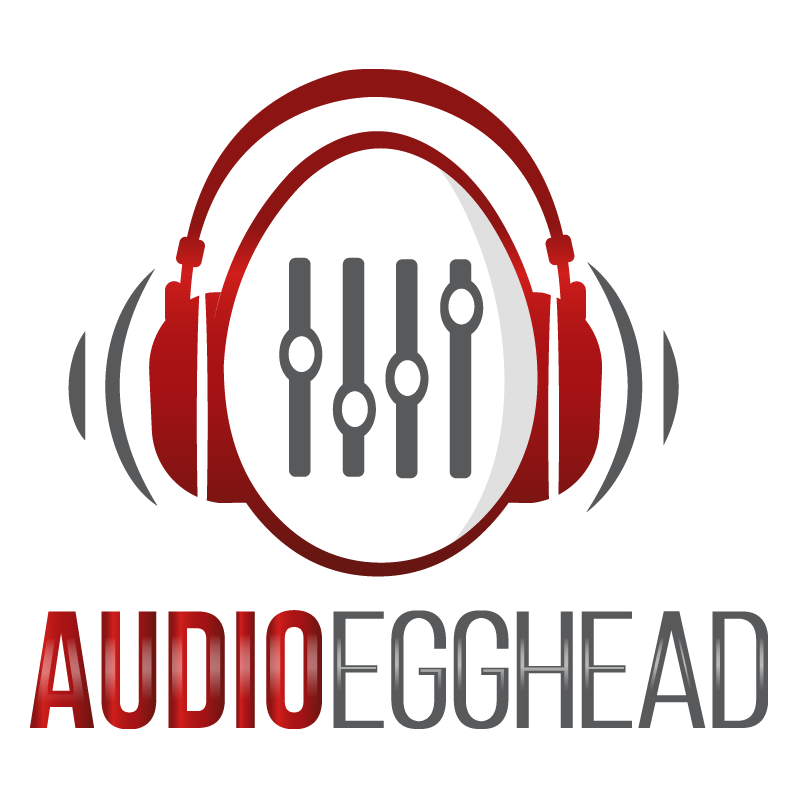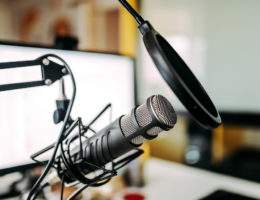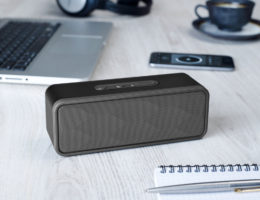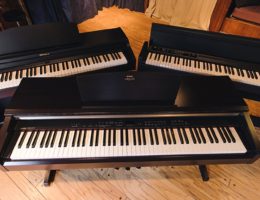How many keys are on a piano? We’ll get into that in just a moment.
(Click here to skip to the answer.)
The piano, or pianoforte, the longer Italian name for piano, is one of the most majestic and influential musical instruments to have ever been created.
It was invented by Bartolomeo Cristofori in the early 1700s. There are many different instruments that fall into the same family as the piano. The whole spectrum of stringed keyboard instruments is called a clavier.
Classical music would have been something totally different without the invention of the piano and other clavier instruments, and as all modern music has evolved from those early days, who knows what pop, rock, and even metal would be like if it never existed?
Some of the most influential musicians of all time (such as Beethoven, Mozart, Chopin, and Bach) played the piano. It takes some real talent, but once you master it, you’ll impress the world. But before you begin your musical journey, you need an answer to a simple question: how many keys are on a piano?
How Many Keys Are on a Piano?
The simple answer to this question is 88. With that said, know that 88 is just the standard number of keys on a piano keyboard. Though almost all full-size pianos today have 88 keys, there are some specialty pianos that have even more.
For instance, the Concert Grand Bosendorfer piano has a whopping 97 keys. Wayne Stuart has even introduced a truly spectacular creation with a piano that has 102 of them.
Larger pianos are more ideal for duets, but there’s no reason a single player can’t tickle all those keys at once. The keys themselves can be made of different materials such as certain types of wood, or perhaps ebony and ivory on more expensive models.
The are many piano manufacturers or piano makers to choose from, some more popular ones being Yamaha, Stuart & Sons, and Steinway.
How Does a “Key” Work?
When you strike a key on a piano, it triggers a hammer, which in turn hits a string. These strings must be tuned periodically in order for the piano to achieve the optimal tone and pitch. Standard pianos also have several octaves (seven to be exact).
That means that they run the gamut of notes A-G seven different times, although each octave has a higher or lower pitch. The white keys on a piano create regular notes while the black keys create sharps and flats. They also have three extra keys that are the lowest pitch on the lowest octave: B, B flat, and A.
Different Types of Pianos
Though all pianos are beautiful in their own way, they are not all the same. There are numerous types of acoustic pianos, such as the grand piano. These are the type you might find in a hotel or restaurant. There are subclasses of grand pianos, too: baby grands, petite grands, medium grands, ballroom grands, and concert grands.
Besides grand pianos, there are also Spinets (the smallest type of piano), Consolettes (which are almost just as small), Consoles (slighter larger than Cosolettes), Studios (which have larger strings and soundboards), and Professionals (which have a very long history). There are also digital pianos, which electronically simulate acoustic pianos, as well as keyboards, which tend to be less expensive and often have multiple synthesizer and effect options, allowing you to recreate sounds of other instruments.
Acoustic Pianos
The acoustic piano is considered to be a string instrument, as well as a percussion instrument, since there is a hammer that strikes the string to produce sound from the keys.
The Dulcimer (900s)
The most direct ancestor of the piano is the dulcimer, which was the first instrument to combine string and percussion functions. The dulcimer is almost like a guitar in that it is a box covered by strings, but the difference is that there is a hammer that comes down on the strings. The dulcimer originated in the middle east, and it wasn’t until the 1000’s that the instrument made its way to Europe.
The Clavichord (The 1300s)
The next “version” of this type of instrument was the clavichord, invented in Italy in the 1300s. The clavichord’s sound was produced by pressing a key into a brass rod, which would then vibrate a string and could have a range of up to five octaves.
The Harpsichord (The 1500s)
The next step in the evolution of this type of instrument was a harpsichord, invented in Italy in the 1500s. This was the first time the design and look would resemble the modern-day acoustic piano.
With the addition of a soundboard, the harpsichord was designed for the strings to be plucked by a strip of wood instead of hammered on, like earlier instruments.
The Modern-Day Acoustic Piano (The 1700s)
The invention of the modern-day acoustic piano as we know it, came about in the seventeenth century, when Bartolomeo Cristofori decided he was unsatisfied with his lack of control over volume when playing the harpsichord, so he switched the design from plucking back to the hammer action, and the design stuck, and that is basically the design that we have today when it comes to acoustic pianos.
Digital Pianos
Modern times have made it unnecessary to buy an expensive and bulky acoustic piano to get a full piano experience. Digital pianos recreate the feel of acoustic pianos with weighted keys and hammer action. That simply means that you have to press on the keys with a similar force that you would an acoustic model. They also feature 88 keys just as standard acoustic pianos do.
These electric pianos produce their sounds by either using samples from acoustic pianos or by emulating the tone by digital processes. Sometimes they even come with additional sounds, including instruments like guitars, basses, trumpets, drums, xylophones, flutes, bongos, and a host of others.
Types of Digital Pianos
Just like acoustic pianos, there are multiple types and styles of digital pianos. There are traditional types that look somewhat like harpsichords or organs.
There are also upright digital pianos that are made to look like acoustic upright pianos.
They even make grand digital pianos, which look like real grand acoustic pianos—but these are mainly considered novelty items.
There are stage digital pianos, portable type digital pianos, hybrid types, and more. Each has its own advantages, but none are quite the same as a classic acoustic piano model.
Digital pianos do tend to be much more affordable than many acoustic versions of the instrument. An even more affordable and portable option for this type of instrument is the keyboard.
Keyboards
A keyboard is not exactly a piano, but they’re obviously similar to some degree. How many keys are on a piano and how many keys are on a keyboard are two different questions—however, as most keyboards settle for a more compact and modest 61 keys. Some come with even fewer.
They, like digital pianos, often come equipped with several instrument emulations and special effects. They might also have built-in sequencers and light-up keys that help you learn certain songs.
However, one of the main differences in keyboards and digital pianos is that keyboards do not have weighted keys.
They are springy and do not feel much like you’re playing a classic piano. Keyboards are usually the best option for beginners since they are less of an investment, are more easily transported back and forth between home and piano lessons, and some even offer teaching functions, like the aforementioned light-up keys and built-in sequencers.
MIDI Controllers
Many MIDI controllers fall into the keyboard category. Many of them don’t even have built-in sounds, and they are used solely for connecting to your computer. MIDI information is delivered to your computer, telling it which notes you are playing, at what velocity, and more.
MIDI controllers are often used in electronic music production or any genre that is created with the use of a computer.
Some MIDI-Controllers are also equipped with as little as 12 keys. But they allow you to change the octave and transpose, so it has the same range capabilities as any other keyboard.
Tools for Learning Piano
“How many keys are on a piano” is a great starter question; the next thing you should be asking is: how do I learn to play?
Thankfully, in this modern age, there are many tools at your disposal. Sure, you could go the traditional route and take lessons from a real, flesh-and-blood teacher.
Books
There are many books available on Amazon to learn a more in-depth history of this style of instrument. There is a variety of piano lesson books also available on Amazon.
YouTube Videos
However, there are also YouTube videos that do a pretty decent job of instructing new learners, and this seems to be the most popular way of learning these days because of the convenience and availability of many different videos, with some explaining some things differently than others do.
This method allows you to kind of choose your own path as far as your lessons and knowledge are concerned.
Apps and Digital Pianos / Keyboards
In addition to real-life teachers, books, and Youtube videos, there are also apps that can connect to certain digital pianos that teach you to play. And as some digital pianos and keyboards use light-up keys and built-in sequencing, you may not even have to leave the stool to learn.
Persistence Required
Learning how to play the piano is a long, hard process, though. Like anything, it will take serious practice and persistence if you plan to master this beautiful instrument.
It’s not all about natural talent; music can be considered a craft, and whatever natural skills you may have must be honed and sharpened by regular practice and work ethic in order to make good use of them, especially the human ear.
Recap
So how many keys are on a piano? Well, now you know that this is not necessarily such a simple question/answer.
The range of the number of keys on an acoustic piano, digital piano, or keyboard can vary greatly, mostly depending on the size of your particular instrument.
The standard is an 88-key piano, but there are some models that have less, and some that have even more.
Are You On the Market for a Piano?
We have gone over several types of pianos, each of which fit different spaces and serves different purposes.
Before purchasing, it’s important to determine your needs. Are you looking to learn the piano or create your own music? What is your budget?
- A digital piano is best for those looking to learn how to play the piano.
Check out our article on the Best Digital Pianos.
- A MIDI Controller (Keyboard) is best for those looking to learn the piano on a budget or minimal space, or those that want to create and record their own music.
Check out our article on the Best MIDI Controllers Under 25 Keys.
Final Words
If you want to learn the piano, there’s no better place to start then right here on the internet. Amazon is a great place to find anything to fit your modern piano needs.
Youtube is a great place to learn music theory and piano lessons. So what are you waiting for? Go sit down at an upright and start tickling those keys. It is time to play the piano.




